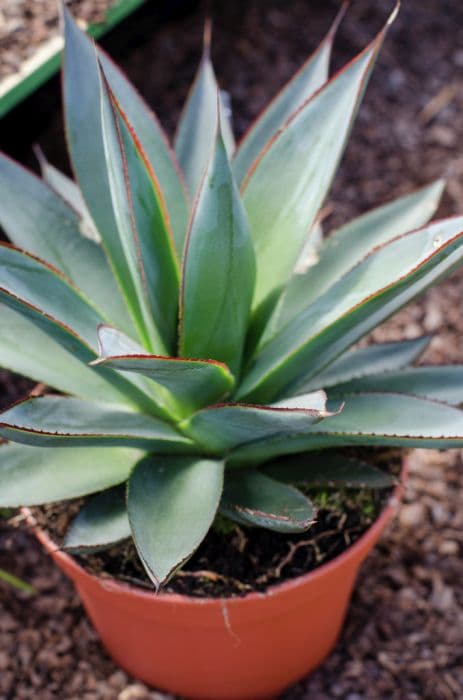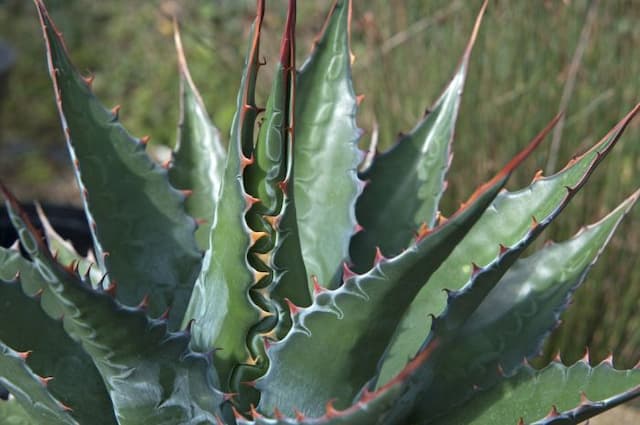Empress Wu Hosta Hosta 'Empress Wu' (PBR)

ABOUT
Hosta 'Empress Wu' is a visually striking plant recognized for its lush foliage. This cultivar showcases broad, heart-shaped leaves that exhibit a deep, rich green hue. The texture of these leaves is also notable, with a slightly corrugated surface that adds to its tactile interest. As the plant matures, the leaves take on a slightly cupped form, accentuating their substantial and robust presence within a garden setting. In the blooming season, Hosta 'Empress Wu' produces tall flower scapes that tower above the foliage, imparting an additional layer of visual appeal. The flowers themselves are bell-shaped and hang in clusters along the scapes. They are typically pale lavender to violet in color, offering a soft and complementary contrast to the verdant leaves below. Hosta 'Empress Wu' is a perennial, which means it will return year after year to grace gardens with its striking presence. Its foliage has a tendency to form a dense, layered canopy, which can provide a lush underplanting to other garden elements or serve as a focal point in a shade garden due to its distinctive foliage and flowering characteristics.
About this plant
 Names
NamesFamily
Asparagaceae.
Synonyms
Plantain Lily, Funkia.
Common names
Hosta 'Empress Wu' (PBR)
 Toxicity
ToxicityTo humans
Hostas, including 'Empress Wu', are not considered highly toxic to humans. While they are not meant for consumption and can cause mild stomach upset if ingested in significant quantities, they do not typically pose a severe risk. Symptoms of ingestion might include nausea, vomiting, and diarrhea. More serious consequences are uncommon for adults, but as with any non-food plant, it is wise to keep them out of reach of young children who might be tempted to eat them.
To pets
Hostas, including 'Empress Wu', are known to be toxic to pets, especially to dogs and cats. If a pet ingests any part of the plant, it may exhibit symptoms such as vomiting, diarrhea, and depression. The plant contains saponins, which are the toxic compounds responsible for these adverse effects. In severe cases, ingestion can lead to more serious symptoms, and veterinary attention should be sought if a pet is suspected of having eaten any quantity of a Hosta plant.
 Characteristics
CharacteristicsLife cycle
Perennials
Foliage type
Deciduous
Color of leaves
Green
Flower color
Lavender
Height
4 feet (1.22 meters)
Spread
5 feet (1.52 meters)
Plant type
Herb
Hardiness zones
3
Native area
Asia
Benefits
 General Benefits
General Benefits- Large Foliage: Hosta 'Empress Wu' features exceptionally large, deeply veined leaves that add texture and visual interest to a garden space.
- Shade Tolerance: This plant thrives in shady locations where other plants may struggle, making it a valuable addition to a shade garden.
- Ornamental Flowers: It produces tall scapes of light purple flowers in summer, adding a vertical dimension and attracting pollinators like bees.
- Low Maintenance: Hosta 'Empress Wu' requires minimal care once established, making it suitable for gardeners looking for easy-care options.
- Cold Hardy: It is hardy in many climates, tolerating winter temperatures in USDA hardiness zones 3-9.
- Long-lived Perennial: As a perennial, it will return year after year, providing long-term interest in the landscape.
- Architectural Presence: The sheer size of the plant can provide a focal point or act as a specimen plant in garden design.
- Drought Tolerance: Once established, it has some drought tolerance, although it prefers evenly moist soil conditions.
- Ground Cover Potential: Its dense foliage can act as ground cover, suppressing weeds and minimizing soil erosion.
- Seasonal Interest: Hosta 'Empress Wu' offers a changing display throughout the growing season, with foliage emerging in spring, flowers in summer, and foliage dying back for winter interest.
 Medical Properties
Medical PropertiesThis plant is not used for medical purposes.
 Air-purifying Qualities
Air-purifying QualitiesThis plant is not specifically known for air purifying qualities.
 Other Uses
Other Uses- Container Gardening: Hostas are excellent for container gardening due to their compact root system, allowing Empress Wu to be a stunning centerpiece in large pots or planters.
- Water Garden Accent: While not a water plant, the Empress Wu's large leaves can provide a beautiful backdrop and contrast to water features without the need for planting directly in water.
- Landscape Sculpture: With its grand size, Empress Wu can be used as a natural sculpture element in garden design, adding texture and a focal point in landscape beds.
- Natural Mulch: As the Hosta leaves decay, they provide a natural mulch that enriches the soil and suppresses weeds around the plant's base.
- Photography Backdrop: The large, attractive leaves of the Empress Wu Hosta can serve as a unique and lush backdrop for plant photography and macro photography.
- Companion Planting: Hosta Empress Wu can be paired with shade-loving perennials such as ferns and astilbes to create a varied and aesthetically pleasing shade garden.
- Bioindicator Plant: Hostas can sometimes be used as bioindicator plants as they may show signs of environmental stress, such as air quality and soil conditions, that can be monitored by gardeners.
- Frost Texture Display: In the fall, a light frost can settle on the broad leaves, creating an intricate pattern and adding an additional interest in the garden during cooler months.
- Leaf Impressions: The large leaves of Empress Wu can be used to make leaf moldings or impressions in garden stepping stones, providing a decorative element and preserving the leaf's unique shape and veining in a solid form.
- Artistic Inspiration: Artists and botanical illustrators may use the distinctive foliage as a subject for drawings, paintings, and other forms of botanical art.
Interesting Facts
 Feng Shui
Feng ShuiThe plant Hosta is not used in Feng Shui practice.
 Zodiac Sign Compitability
Zodiac Sign CompitabilityThe plant Hosta is not used in astrology practice.
 Plant Symbolism
Plant Symbolism- Resilience: Hostas, including 'Empress Wu', are known for their hardiness and ability to thrive in shade, symbolizing the ability to grow and flourish even in challenging conditions.
- Strength: The 'Empress Wu' variety is one of the largest hostas and its impressive size can represent strength and a commanding presence in a garden space.
- Devotion: Hostas are perennial plants, which return year after year, often seen as a symbol of loyalty and long-lasting devotion in relationships.
- Adaptability: Given their tolerance for various soil conditions and light levels, hostas symbolize versatility and the ability to adapt to one's environment.
- Beauty in Simplicity: With its lush foliage and elegant flowers, the hosta can signify the beauty found in simple, understated elegance.
 Water
WaterHostas, including 'Empress Wu', should be watered deeply once a week, providing about an inch of water which translates to about 0.6 gallons per square yard. The aim is to water the soil around the plant thoroughly while avoiding wetting the leaves to prevent fungal diseases. In times of drought or extreme heat, you might need to water more frequently, monitoring the soil moisture and ensuring it stays consistently damp but not waterlogged. Decrease watering in late fall as the plant prepares for dormancy.
 Light
LightHostas like 'Empress Wu' thrive best in partial to full shade. The ideal spot for these plants is under the canopy of trees where they receive filtered sunlight or in areas that get a few hours of morning sun followed by shade for the rest of the day. Direct afternoon sunlight can scorch their leaves, so it's important to avoid planting them in areas that are exposed to harsh sun during the hottest part of the day.
 Temperature
TemperatureHostas, including 'Empress Wu', grow well in a range of temperatures and are hardy in USDA zones 3 through 9. They can withstand minimum temperatures down to around -40°F and can survive up to the maximum temperature of around 90°F, although they prefer cooler weather overall. The ideal growing temperature for these plants generally falls between 50°F and 75°F for optimal leaf development and health.
 Pruning
Pruning'Empress Wu' Hostas generally require little pruning other than the removal of any damaged or dead foliage which can be done as needed throughout the growing season. It is best to do thorough pruning in late fall or early spring where you can cut back the spent leaves and flower stalks to tidy up the plant and prevent disease. Pruning also stimulates new growth in the spring.
 Cleaning
CleaningAs needed
 Soil
SoilThe ideal soil mix for Hosta, commonly known as Plantain Lily, should be well-draining with plenty of organic matter, such as a blend of loam, peat moss, and perlite. A pH range between 6.0 and 7.5 is suitable for 'Empress Wu'.
 Repotting
RepottingPlantain Lilies generally do not require frequent repotting. Hosta 'Empress Wu' may need repotting every 3 to 4 years to rejuvenate the soil and manage its large size.
 Humidity & Misting
Humidity & MistingPlantain Lilies, including 'Empress Wu', prefer moderate humidity levels and will thrive as long as the environment is not too arid.
 Suitable locations
Suitable locationsIndoor
Ensure bright, indirect light and avoid dry air for indoor Plantain Lilies.
Outdoor
Plant in partial shade with moist, rich soil for outdoor Plantain Lilies.
Hardiness zone
3-9 USDA
 Life cycle
Life cycleHosta 'Empress Wu' begins its life cycle as a dormant rhizome or seed, usually planted in early spring after the last frost. Germination occurs when temperatures and soil conditions are favorable, leading to the emergence of shoots and leaves as it enters the vegetative growth phase. Throughout the spring and summer, the plant's leaves expand and it develops a sizeable clump of foliage, with its distinct large leaves characteristic of 'Empress Wu' becoming increasingly impressive. In mid to late summer, the Hosta 'Empress Wu' produces tall flower scapes that bear lavender or white flowers, attracting pollinators such as bees. After the flowering stage, the plant sets seed if pollination has occurred, and as autumn approaches, the foliage dies back as the plant reenters dormancy. During winter, the plant remains dormant underground until the next spring, when temperatures rise and the cycle begins anew.
 Propogation
PropogationPropogation time
Spring-Early Summer
The most popular method of propagating Hosta 'Empress Wu' is through division. This process is best done in the early spring or late summer when the plant is not in active growth. The gardener should carefully dig up the entire plant, making sure to keep as much of the root system intact as possible. Using a sharp knife or spade, the hosta clump should then be sliced into smaller divisions, each with at least two or three shoots and a portion of the root system. These divisions can then be replanted at the same depth they were growing before, spaced about 3 to 4 feet apart to accommodate for their large size. It's essential to water the newly planted divisions well to help them establish.









